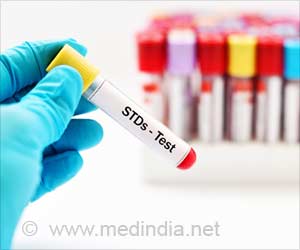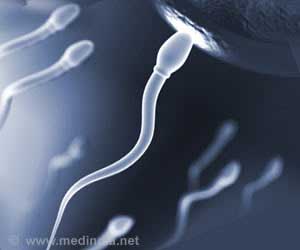A study on the evolution of ejaculation strategies has shown that attractive males release fewer sperm per mating to maximize their chances of producing offspring across a range of females.
A study on the evolution of ejaculation strategies has shown that attractive males release fewer sperm per mating to maximize their chances of producing offspring across a range of females.
Writing about their findings in the journal American Naturalist, the researchers of University College London and University of Oxford say that their findings suggest that, paradoxically, matings with attractive males may be less fertile than those with unattractive ones.They mathematically modeled a range of male ejaculation strategies to look for the optimum "sperm load" per mating, and how this might vary depending on mating patterns.
Studies conducted in the past have shown that in animals, such as the domestic fowl, and fish, such as the Arctic charr, males with privileged access to females produce ejaculates of lower fertilizing quality than subordinate males.
"In some species, females mate with many different males. Each male's sperm competes with that of other males in a process known as 'sperm competition'. Since males have finite resources to allocate to breeding, they allocate them carefully to each mating to maximize their number of offspring. If a male puts a lot of resources into each mating he will get more offspring per mating, but at the expense of fewer matings. If, on the other hand, a male puts few resources into each mating he will secure less paternity per mating, but will be able to carry out more matings overall. Thus, there is a trade-off between number of matings and success per mating," says University College London researcher Sam Tazzyman.
"How a male negotiates this trade-off depends on how easy he finds it to attract females. The more attractive a male is, the more females will be willing to mate with him, reducing the value of each mating to him. This means it is optimal for him to contribute fewer sperm per mating. Although this reduces fertility per mating, it maximizes the number of offspring he sires overall. Less attractive males secure fewer matings but value each of them more highly, and by allocating more sperm to each mating make the most of their meagre opportunities. This leads to the rather paradoxical prediction that matings with attractive males may be less fertile than those with unattractive males.
"There are as yet few good examples of this process found in nature, as it has generally been assumed that more attractive or higher quality males will be more fertile. A possible case can be seen in chickens, which in the wild live in groups of varying numbers of males and females. Females mate with many males, so males are subject to sperm competition. However, the attractiveness of a male is determined in large part by his social standing. Males higher up the pecking order find it easier to secure matings with the females, but they transfer fewer sperm to females. In addition, the sperm of dominant birds is less motile and has lower fertilizing efficiency than the sperm of subordinate birds. Scientists can artificially change the pecking order, and when this is done, the new dominant male's sperm quickly loses motility, while that of males reduced to subordinate status increases in motility.
Advertisement
"Finally, how this work applies to humans and other primates is not yet known. Human attractiveness is complicated and influenced by a number of factors including cultural preferences. Nonetheless, ejaculate size and sperm quality are likely to have been moulded by similar forces, like attractiveness and the number of sexual partners, that are important in other species," Tazzyman adds.
Advertisement
ARU








